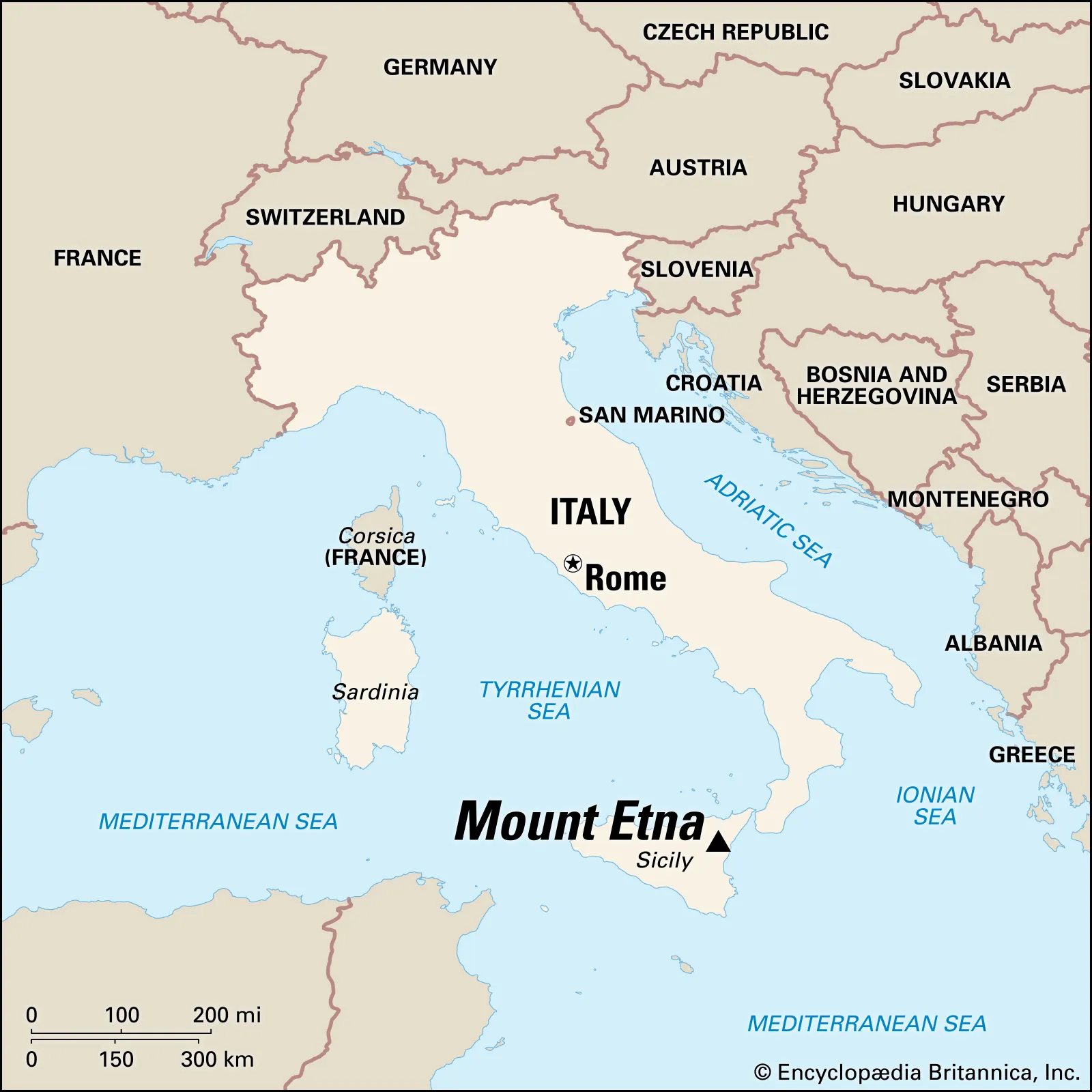Why in the News?
Mount Etna has erupted again after its recent eruption in June.

About Mount Etna:
- Location: Situated on the east coast of Sicily, Italy, near the city of Catania.
- Type: Mount Etna is a stratovolcano (also called a composite volcano), which is formed from layers of hardened lava, volcanic ash, and rocks.
- Height: It stands at approximately 3,300 meters, making it the tallest volcano in Europe south of the Alps.
- Recognition: Declared a UNESCO World Heritage Site in 2013, with documented volcanic activity for at least 2,700 years.
- Eruption Record: Etna is almost constantly active. Notable eruptions have occurred in 1400 B.C., 1669, 2001, 2018, 2021, 2024, and 2025.
- Volcanic Activity Style: Known for Strombolian and effusive eruptions, with occasional Plinian eruptions (rare and more explosive).
Reasons Behind the Eruption:
- Nature of Eruption: The eruption is classified as either Strombolian or possibly Plinian, depending on interpretation:
- Strombolian Eruption: Characterized by moderate explosive bursts, caused by gas bubbles in magma suddenly bursting at the surface.
- Plinian Eruption: Some volcanologists suggest this classification due to the large ash column that may have reached the stratosphere.
- Eruption Trigger: The eruption likely began due to pressure buildup from gas within the magma chamber, leading to collapse of the southeast crater and lava flows.
| [UPSC 2014] Consider the following geological phenomena:
1. Development of a fault 2. Movement along a fault 3. Impact produced by a volcanic eruption 4. Folding of rocks Which of the above cause earthquakes? Options: (a) 1, 2 and 3 (b) 2 and 4 (c) 1, 3 and 4 (d) 1, 2, 3 and 4* |
Get an IAS/IPS ranker as your 1: 1 personal mentor for UPSC 2024

